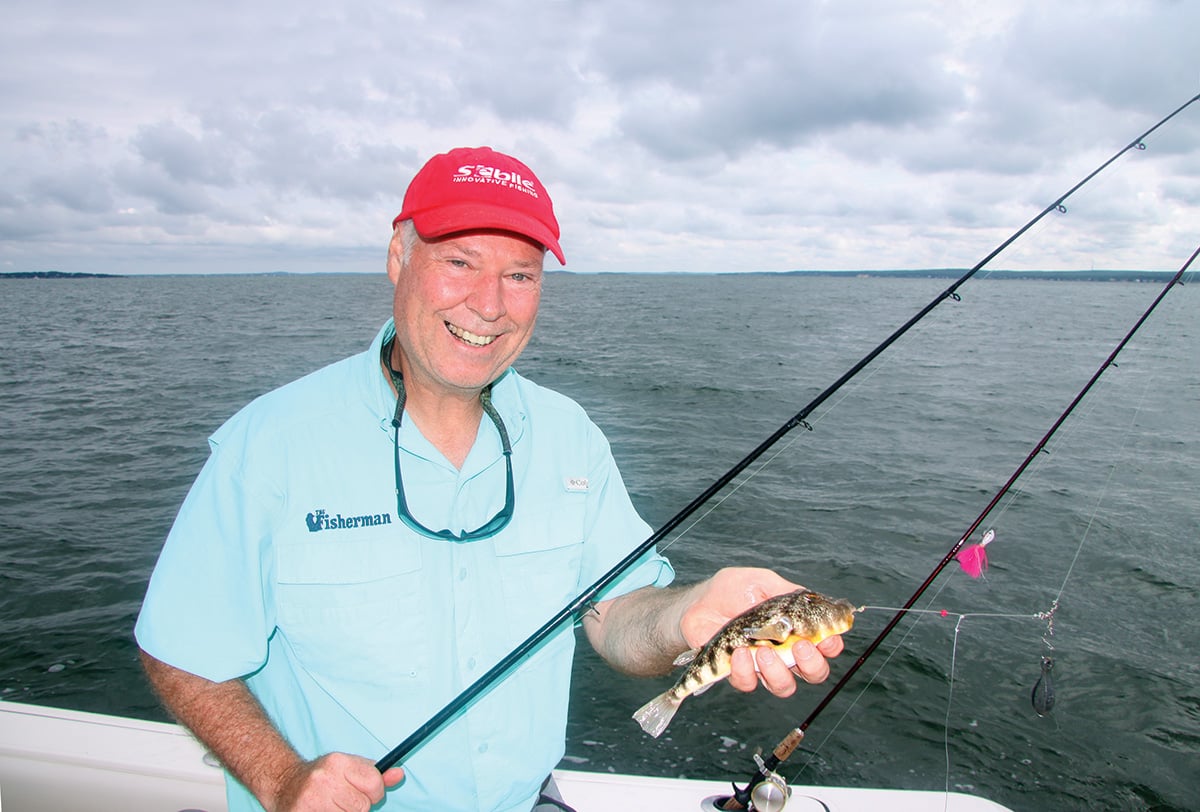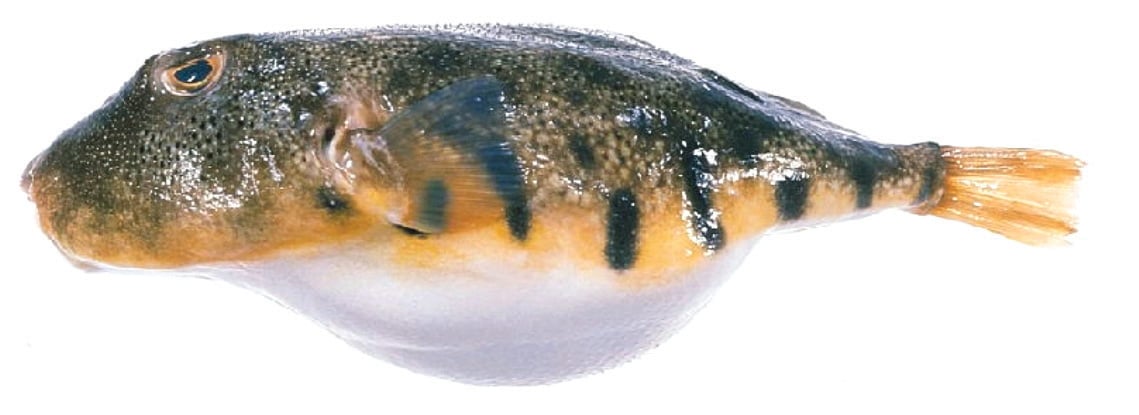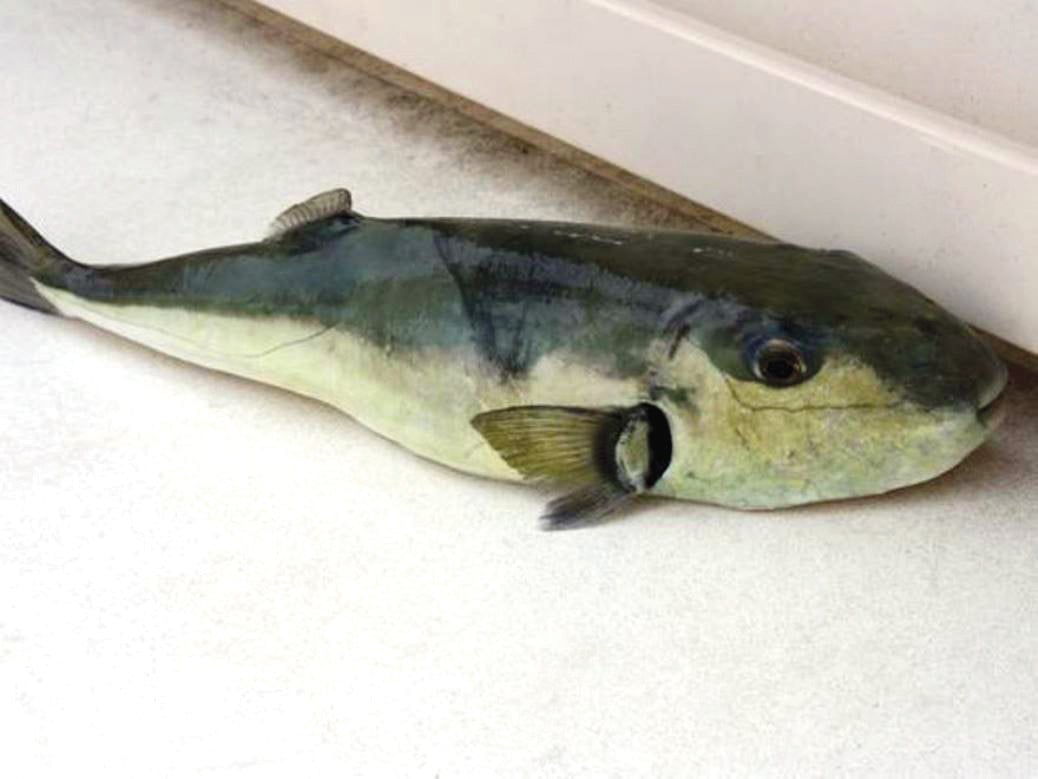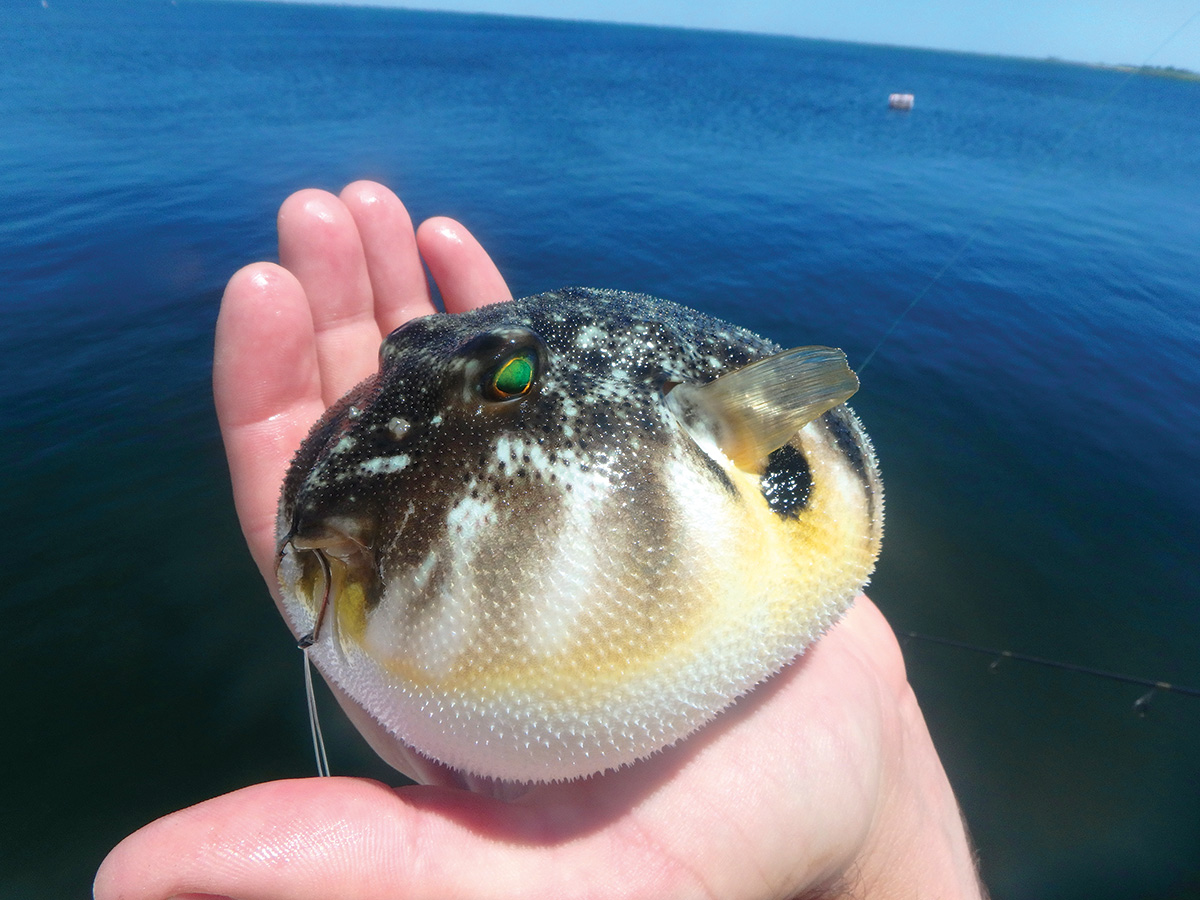
For some of us, we’ve been catching blowfish, more specifically northern puffers (Sphoeroides maculates), since childhood. Over that time span, we’ve heard from numerous sources that the fish contain a poison sack that must be cut out properly, otherwise you will get sick. That being said, there really haven’t been any known cases of illness or death associated with these blowfish in our area or any other area for that matter.
Over the past few years, the Smooth Puffer (Lagocephalus laevigatus) has been making a prominent appearance in catches in the NY/NJ area, and this member of the puffer family is a serious threat to your health if not cleaned properly. The smooth puffer grows much larger, and I have seen photos of 8-pounders caught the past couple of seasons in local waters. The frightening part was that some of these fish were eaten, and luckily, no one died.
Puffers belong to the family Tetradontidae, which is comprised of approximately 120 known species spread out over 28 genera. Most species are poisonous, and some are the most poisonous fish on Earth. The neurotoxins in puffers responsible for illness and death are Tetrodotoxin and Saxitoxin, which adversely affect the human central nervous system. According to the US Food and Drug Administration (FDA), these toxins are deadlier than cyanide and there are no known antidotes for these toxins. Also, these toxins cannot be frozen or cooked out. The flesh of the northern puffer is not toxic but there is scientific evidence that indicates that when toxins are found, they are isolated to the liver. Proper cleaning without cutting or puncturing the liver or any viscera renders the flesh perfectly safe.
As for the smooth puffer, we are not that lucky. Toxins can be found in all organs, intestines and even in the skin. When it comes to cleaning puffers, toxins such as those in the smooth puffer are so dangerous that only one US importer in NYC can import Fugu (Japanese Puffer) from one Japanese processing plant under an agreement between the Japanese government and FDA. Even if their procedure was made public, don’t take the risk. Forget trying to clean Smooth Puffers properly. You can easily cross contaminate fillet tables, knifes, buckets, etc. putting your safe catch at risk. Training for this takes years. Take this fish off the hook carefully and release it.
Puffer ID
Northern Puffer Sphoeroides maculates
The northern puffer is a club-shaped fish with a gray, brown or olive back and a yellow or white belly. Adults have small spines covering the entire body with a tiny beak-like mouth. Its color is poorly defined black/dark green spots and saddles and a yellow to white belly. It has tiny jet-black pepper spots (about 1 mm in diameter) scattered over most of pigmented surface, particularly evident on cheeks. Lower sides of the body have a row of black, elongate, bar-like markings. A small dorsal fin is set far back near the tail. Sphoeroides maculatus, like others in the puffer family, “puffs up” into a ball in self-defense by inhaling air or water into a special chamber near its stomach. The northern puffer reaches up to 36 cm (1 foot, 2 inches) in length, but is usually around 20 cm (8 inches).

Smooth Puffer Lagocephalus laevigatus
Usually entirely gray to olive-gray, darker above than below; sides somewhat silvery. Caudal fin shallow but distinctly forked; upper lobe longer. Dorsal and anal fins high, with 12 to 13 rays each. Dorsal fin begins at a point about midway between bases of pectoral and caudal fins. Body entirely unscaled except for the prickly belly and underside of the head. The prickles are small, with two well-developed basal prongs, and a fourth prong that is very small and located at front, if present. Fleshy fold from behind lower base of pectoral fin to caudal fin. Lateral line present. Young: three to four dark brown saddles above; some dark spots. Size: To 2 feet.

Catching Them
Catching blowfish certainly is not rocket science. They often congregate in schools and once you find them it is possible to catch them in big numbers. Unfortunately, since they are highly regarded in the marketplace these days, every time they appear on the verge of coming back in big numbers, they are targeted heavily by commercial pot and trap fishermen and recreational fishermen. The really unfortunate thing is that there is no management of the species – no size limits and no bag limits. Last year it was not unusual to see buckets full of baby blowfish on South Shore docks. A market has even developed for the baby puffers, with fish markets selling the little tail sections as bite size appetizers, similar to shrimp. New York’s Department of conservation is currently exploring the establishment of some blowfish regulations regarding size and bag limits. Let’s hope they don’t drag their feet on this one.
Blowfish are very good eating and if you want to target them, some basic tackle is all you need. Many of the docks and piers on Long Island offer an opportunity to catch blowfish. A light spinning or baitcasting outfit with 8- to 10-pound test, some light sinkers in the 1-ounce range and some long shank hooks similar to those sold as snapper hooks in most tackle shops get the job done. The long shank hook protects your line or leader from the puffer’s buck teeth, and also makes it easier to unhook them.
Blowfish are voracious feeders and back when they were super abundant, it was not uncommon to catch them on bare hooks or tin foil laced hooks. These days, squid is your best choice in the bait department. Worms with their high cost are not necessary, and clams are easily nibbled off the hook. You can toughen up your squid baits by cutting them into small strips and storing them in a mixture of kosher salt and a touch of water. Chumming, either from a boat or dock is a good way to draw blowfish to you, and either bunker or clam chum are equally effective.

Cleaning Tips
There are many ways to clean a blowfish (northern puffer) and there are numerous videos if you search YouTube. The key is to not burst or puncture any organs or intestines within the abdominal cavity, and that is also the case with almost any fish you plan on eating. An easy method with blowfish is to carefully slice the abdominal cavity going just deep enough to cut through the skin. Scoop out the viscera and scrape the kidney matter under the spine. Rinse with potable water. Cut the skin around the head, slide your fingers under the skin and pull to the tail in one fast motion. Cut the loose skin and remove the head. Now you are ready to cook your blowfish.



